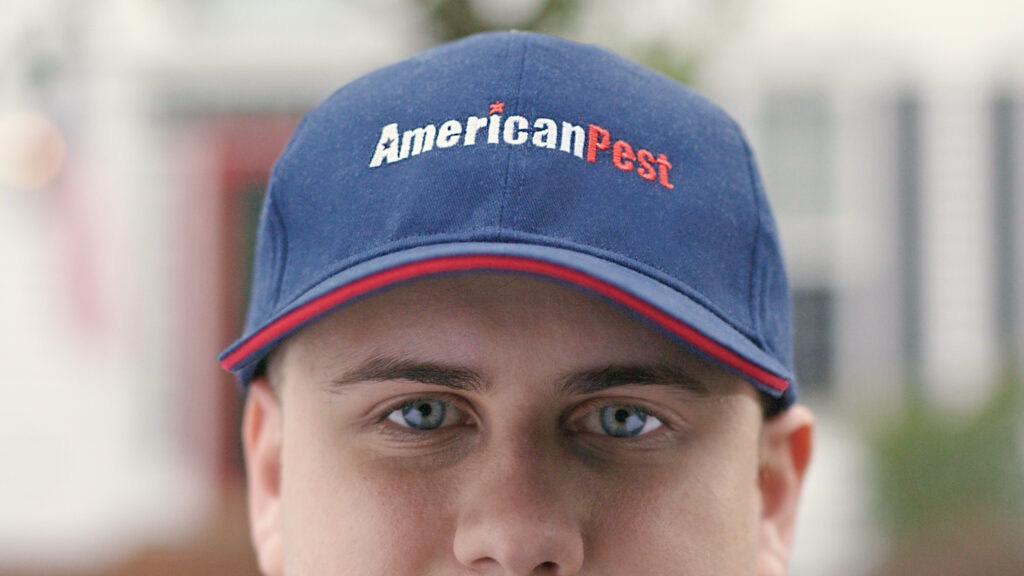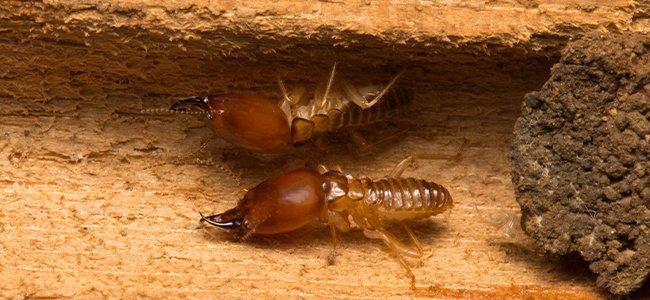Subterranean termites are social insects, living together in colonies in the soil. Within the colony, there are specialized divisions of labor. They feed on wood or other cellulose products.
There are 3 primary castes: Workers, Soldiers, and Reproductives (kings, queens, and secondary reproductive).
Workers:
The creamy-colored workers are rarely seen unless infested wood is broken open or termite tubes (more on this later) are exposed. It’s the worker caste that feeds on wood and forages for food. They expand on and maintain the tunnel/gallery system and share food with colony members. Individual workers can live up to five years.
Soldiers:
Soldiers have elongated yellowish heads with large jaws. They’re dependent on the workers for food as their jaws prevent them from feeding themselves. Whenever the colony is invaded or a hole is made in an infested piece of wood the soldier caste assembles to defend the breach until worker termites can seal the opening.
Reproductives:
King and queens- The king and queen are dark-brown to black and about 3/8″ to 1/2″ long. They have two pairs of translucent wings that break off shortly after swarming (shed wings could be the only visible evidence of a termite infestation within a structure). A termite queen continuously lays eggs over her entire lifetime of 10+ years.
Supplementary (secondary) reproductives- developing mature colonies as replacements for the king or queen if one should die or become unable to perform his or her duty. They are light-colored, larger than workers, and never develop wings.
Request Your Pest Control Estimate
Colony Construction:
Once suitable, moist soil is detected, the paired king and queen excavate a small chamber. When it is large enough they will crawl in, mate, and spend the rest of their lives underground. The queen lays her first batch of eggs (6-12 eggs) within a few days or weeks of mating. After a two-week incubation period, the king and queen tend the hatched brood. Eventually, egg-laying becomes the queen’s full-time responsibility and the original offspring begins to tend the newly hatched workers. As the colony matures, the queen becomes capable of producing thousands of eggs per day!!
In the spring, typically during the first warm days, established termite colonies (2 to 6 years old) release swarms. These emerging reproductives (swarmers or alates) may be seen over days, weeks, or only once within a structure. Swarming may occur after termite treatment has taken place. Alates have been nurtured and prepped for their spring emergence in special swarming tubes which are unaffected by soil treatments. Winged termites are attracted to light and if they emerge on the interior, they are likely to congregate around windows and be attracted to other sources of light. After flying off with a characteristic flight, they will break off their wings and try to locate a mate. Although the presence of large numbers of swarming termites is concerning to homeowners, no property damage is caused by the reproductive caste.
Trusted by 30,000+ Homes & Businesses
“American Pest service technicians are always willing to take their time and listen to concerns, answer questions and crawl around checking out areas that may show signs of intruding insects or rodents.”
“I wanted to write to say how impressed I am with your entire crew and the general way you operate. Everyone who entered my home was sympathetic, sensitive, competent, and respectful. I think what stands out was the way your company understood, and expressed in its own way, the psychological damage that bed bugs inflict.”
“Everyone at this company is wonderful to work with – whether it’s customer service, billing, technicians and even the web team! I love this company!”
“I called American Pest because of an ant problem but they wound up treating so much more. Great conversation with the main office and the tech who came to the house was incredibly punctual, courteous, extremely knowledgeable/excited about his work. Happy to say I no longer share the house with ants or any other insects!”
“Excellent service!! Our rep was great, answered all our questions, and explained things well. Had a lot of spiders and other crawlers; nothing since our service!! Would highly recommend!!”
Contact Us Today!
Do you need an estimate for service or have questions about pests? We’d love to hear from you!
Fill out the form and receive feedback today. For immediate service, please give us a call!

